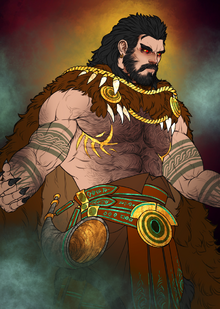More actions
made godsrot undead not enemies of the faith |
No edit summary |
||
| Line 8: | Line 8: | ||
Fornoss is one of the earliest [[Religion]]s of the [[Ailor]] [[Race]], that survived thousands of years of conversion by other Religions as well as attempts to be eradicated by various nations, as one of the few surviving so called [[Pagan Faiths]]. Unlike the other (mostly) dead Pagan Faiths, Fornoss has a large following, particularly among [[Velheim]] and [[Gallovian]] Ailor, though a large number of [[Urlan]], [[Dwarves]], and some [[Eronidas Ashaven|Ashaven Eronidas]] also follow it, meaning it is not limited in scope to just Ailor. Fornoss is sometimes also called the Old Gods Religion, but this is not a historically correct term. The Gods are not old from a pure chronological perspective, and it is certainly not the oldest Religion in Aloria. This term was mostly popularized by the Ailor, who when reviewing only their own history, can see Fornoss as the oldest Religion, but when taking the totality of the world's history, Fornoss is a more accurate term, which roughly translates to "Ancient us", an homage to its survival through the ages. | Fornoss is one of the earliest [[Religion]]s of the [[Ailor]] [[Race]], that survived thousands of years of conversion by other Religions as well as attempts to be eradicated by various nations, as one of the few surviving so called [[Pagan Faiths]]. Unlike the other (mostly) dead Pagan Faiths, Fornoss has a large following, particularly among [[Velheim]] and [[Gallovian]] Ailor, though a large number of [[Urlan]], [[Dwarves]], and some [[Eronidas Ashaven|Ashaven Eronidas]] also follow it, meaning it is not limited in scope to just Ailor. Fornoss is sometimes also called the Old Gods Religion, but this is not a historically correct term. The Gods are not old from a pure chronological perspective, and it is certainly not the oldest Religion in Aloria. This term was mostly popularized by the Ailor, who when reviewing only their own history, can see Fornoss as the oldest Religion, but when taking the totality of the world's history, Fornoss is a more accurate term, which roughly translates to "Ancient us", an homage to its survival through the ages. | ||
==Origins== | ==Origins== | ||
The birthing of the Gods and the founding of the Religion are two distinct periods. The birthing of the Gods is a mysterious period perhaps thousands of years before the first followers professed their belief in the Gods, as it is said that the Gods wandered for many ages before finding the people that would recognize their worth. It is said that the Eili Gods were born at the foot of the tree Arne surrounded by Dragons, though it is unclear if these refer to the [[Draconism]] Dragon Gods, or just the folktale version of Dragons which may also have been Skywyrms (mythical flying reptilian creatures from Velheim belief which are not Dragons, nor [[Wyvern]]s). There is also some theological debate about whether Arne is actually the Draconist Goddess Daiana, because no Tree of Life has ever been found elsewhere, but most Fornoss believers hold onto the version that states Arne is not a Dragon. The Fornoss Religion is roughly 15,000 years old, though this has an error margin of about 3,000 years, because the proto-Velheim people who were the first Fornoss followers did not have a form of writing at the time. The Religion was founded on a series of islands and part of the mainland of Oldt Tera ([[Ceardia]]), where the locals embraced a form of polytheism while most other [[Ceardian]] tribes were monotheistic. The Eili offered the faithful escape from the endless bloodshed and | The birthing of the Gods and the founding of the Religion are two distinct periods. The birthing of the Gods is a mysterious period perhaps thousands of years before the first followers professed their belief in the Gods, as it is said that the Gods wandered for many ages before finding the people that would recognize their worth. It is said that the Eili Gods were born at the foot of the tree Arne surrounded by Dragons, though it is unclear if these refer to the [[Draconism]] Dragon Gods, or just the folktale version of Dragons which may also have been Skywyrms (mythical flying reptilian creatures from Velheim belief which are not Dragons, nor [[Wyvern]]s). There is also some theological debate about whether Arne is actually the Draconist Goddess Daiana, because no Tree of Life has ever been found elsewhere, but most Fornoss believers hold onto the version that states Arne is not a Dragon. The Fornoss Religion is roughly 15,000 years old, though this has an error margin of about 3,000 years, because the proto-Velheim people who were the first Fornoss followers did not have a form of writing at the time. The Religion was founded on a series of islands and part of the mainland of Oldt Tera ([[Ceardia]]), where the locals embraced a form of polytheism while most other [[Ceardian]] tribes were monotheistic. The Eili offered the faithful escape from the endless bloodshed and Oblation Magic raids under the [[Elves]] that terrorized the Oldt Tera shores, fleeing the mainland, and retreating to some island called Aldra, which cannot be found on any modern map. On Aldra however, the Fornoss believers still were not safe, so the Eili contacted the Vola, and created The Pact, which joined both Pantheons to the Fornoss believers as two distinct unions, and the Fornoss people were finally given safety in Volaheim's embrace through the Vaarda Gates. For thousands of years, the Fornoss followers spread across the world through the Vaarda Gates, until Svartskra. | ||
==Core Beliefs== | ==Core Beliefs== | ||
The Fornoss Gods are divided between two distinct Pantheons, the Eili who are generally considered mindful and virtuous but restrained, and the Vola who are generally considered opportunistic and selfish but powerful. The two Pantheons represent the two halves of any person's soul, filled with desire to do good by others, and desire to do good by one's self. It is important to stress here that there is no ontological morality that can be assigned to either Pantheon. While some Eili create the impression of being purely benign, they are in ways just as flawed as mortals and have desires and wants and needs that can cause them to commit great misdeeds, such as the time when Bard cut off Svol's arms because Svol refused to participate in Bard's punishment of the faithful for small misdeeds | The Fornoss Gods are divided between two distinct Pantheons, the Eili who are generally considered mindful and virtuous but restrained, and the Vola who are generally considered opportunistic and selfish but powerful. The two Pantheons represent the two halves of any person's soul, filled with desire to do good by others, and desire to do good by one's self. It is important to stress here that there is no ontological morality that can be assigned to either Pantheon. While some Eili create the impression of being purely benign, they are in ways just as flawed as mortals and have desires and wants and needs that can cause them to commit great misdeeds, such as the time when Bard cut off Svol's arms because Svol refused to participate in Bard's punishment of the faithful for small misdeeds. While generally speaking all Gods have good intentions for their followers, they are all equally capable of cruelty, misguidedness, deceitful or selfish actions to preserve their worship, which speaks to their vanity. However, because Soldi inherently represents helping others, and Svaldi represents using others, the faithful still draw lines in the sand and dictate morality on each other based on their personal beliefs, even if there is no theological reason to reinforce it. There are some people who worship only the Eili called Eilirik, and some people who only worship the Voli called Volirik, while a person who worships both is called a Hvarkirik. These three groups tend to conflict with one another for religious reasons, but usually unite when facing an external threat, like they did during the Skagger Wars against Regalians. Fornoss does not have a strict list of Virtues and Vices, rather, source the list of Soldi and Svaldi enriching activities from the Gods and Goddesses section. | ||
===Soldi & Svaldi=== | ===Soldi & Svaldi=== | ||
| Line 24: | Line 24: | ||
===Svartskra=== | ===Svartskra=== | ||
The Svartskra identifies a pivotal point in Fornoss history that despite its massive importance to all Fornoss believers, is mostly shrouded in mystery either by the Eili forcing the faithful to forget, or the people willingly abandoning any reference to this period to avoid the stray faithful from looking too deep into the matter and opening old wounds. As part of the Fornoss origins, the so-called Vaarda Gates, exist all over the world visited by Fornoss followers, helping their early colonizing boom. It is said by the Eili that these Gates were built by Bev, and passed through Volaheim to fold time and space together, allowing instant transportation across vast distances. At some point, the relationship between the Fornoss believers and the Eili, as opposed to the Vola and their Spirits, turned sour. It is said by the Eili that Rand (who they call the Great Betrayer) tricked them and condemned the Fornoss followers to some kind of horrible fate, thus causing their rebellion against the Pact that was meant to save the early Velheim people | The Svartskra identifies a pivotal point in Fornoss history that despite its massive importance to all Fornoss believers, is mostly shrouded in mystery either by the Eili forcing the faithful to forget, or the people willingly abandoning any reference to this period to avoid the stray faithful from looking too deep into the matter and opening old wounds. As part of the Fornoss origins, the so-called Vaarda Gates, exist all over the world visited by Fornoss followers, helping their early colonizing boom. It is said by the Eili that these Gates were built by Bev, and passed through Volaheim to fold time and space together, allowing instant transportation across vast distances. At some point, the relationship between the Fornoss believers and the Eili, as opposed to the Vola and their Spirits, turned sour. It is said by the Eili that Rand (who they call the Great Betrayer) tricked them and condemned the Fornoss followers to some kind of horrible fate, thus causing their rebellion against the Pact that was meant to save the early Velheim people. From this point it is unclear if the Fornoss believers were expelled or fled from the Volaheim Gates. Whatever the circumstances, the Gates were closed shut after everyone was out with Bev's Keys (Artifact Weapons), which were then scattered across the world. The Vola maintain that the Eili fomented a false rebellion and that the followers defaced the Vola in their own home, though whichever version is closer to the truth, is hard to say as both sides have motive to lie. The last side effect of Svartskra (the day the Gates shut), was that the two Eili who had brokered the deals with the Vola the Flesh God Gro and the Metal God Jord were banished by the Eili and stripped from the Pantheon. Similarly, the Vola banished the two Gods responsible for working out the deal with the Eili being the Revenge God Asbjørn and the Greed God Frynni, who were also stripped from the Pantheon. Since this day, the Eili and Vola have been immortal enemies. As a consequence of this animosity, both sides agreed to refrain from interfering with the faithful too much, so as to prevent all out holy war within the Religion. This explains why the Fornoss Gods have been exceptionally silent during major tragedies that struck for example the Velheim people in the past 300 years, however in recent years, this policy has shown signs of cracking, with some raising concerns that if the Gods get too involved, that they will start fighting each other. | ||
==Gods and Goddesses== | ==Gods and Goddesses== | ||
Revision as of 18:58, 9 July 2024
| Fornoss | |
|---|---|
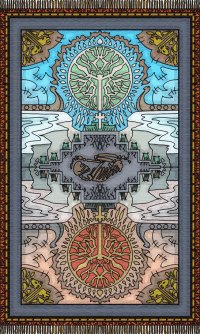 | |
| Religion | |
| Pronunciation | For-noss (like Nosferatu) (clear pause between the two). |
| Origins | Presumed roughly 15,000 years ago. |
| Deities | |
| Two distinct Pantheons of 7 Gods each. | |
Fornoss is one of the earliest Religions of the Ailor Race, that survived thousands of years of conversion by other Religions as well as attempts to be eradicated by various nations, as one of the few surviving so called Pagan Faiths. Unlike the other (mostly) dead Pagan Faiths, Fornoss has a large following, particularly among Velheim and Gallovian Ailor, though a large number of Urlan, Dwarves, and some Ashaven Eronidas also follow it, meaning it is not limited in scope to just Ailor. Fornoss is sometimes also called the Old Gods Religion, but this is not a historically correct term. The Gods are not old from a pure chronological perspective, and it is certainly not the oldest Religion in Aloria. This term was mostly popularized by the Ailor, who when reviewing only their own history, can see Fornoss as the oldest Religion, but when taking the totality of the world's history, Fornoss is a more accurate term, which roughly translates to "Ancient us", an homage to its survival through the ages.
Origins
The birthing of the Gods and the founding of the Religion are two distinct periods. The birthing of the Gods is a mysterious period perhaps thousands of years before the first followers professed their belief in the Gods, as it is said that the Gods wandered for many ages before finding the people that would recognize their worth. It is said that the Eili Gods were born at the foot of the tree Arne surrounded by Dragons, though it is unclear if these refer to the Draconism Dragon Gods, or just the folktale version of Dragons which may also have been Skywyrms (mythical flying reptilian creatures from Velheim belief which are not Dragons, nor Wyverns). There is also some theological debate about whether Arne is actually the Draconist Goddess Daiana, because no Tree of Life has ever been found elsewhere, but most Fornoss believers hold onto the version that states Arne is not a Dragon. The Fornoss Religion is roughly 15,000 years old, though this has an error margin of about 3,000 years, because the proto-Velheim people who were the first Fornoss followers did not have a form of writing at the time. The Religion was founded on a series of islands and part of the mainland of Oldt Tera (Ceardia), where the locals embraced a form of polytheism while most other Ceardian tribes were monotheistic. The Eili offered the faithful escape from the endless bloodshed and Oblation Magic raids under the Elves that terrorized the Oldt Tera shores, fleeing the mainland, and retreating to some island called Aldra, which cannot be found on any modern map. On Aldra however, the Fornoss believers still were not safe, so the Eili contacted the Vola, and created The Pact, which joined both Pantheons to the Fornoss believers as two distinct unions, and the Fornoss people were finally given safety in Volaheim's embrace through the Vaarda Gates. For thousands of years, the Fornoss followers spread across the world through the Vaarda Gates, until Svartskra.
Core Beliefs
The Fornoss Gods are divided between two distinct Pantheons, the Eili who are generally considered mindful and virtuous but restrained, and the Vola who are generally considered opportunistic and selfish but powerful. The two Pantheons represent the two halves of any person's soul, filled with desire to do good by others, and desire to do good by one's self. It is important to stress here that there is no ontological morality that can be assigned to either Pantheon. While some Eili create the impression of being purely benign, they are in ways just as flawed as mortals and have desires and wants and needs that can cause them to commit great misdeeds, such as the time when Bard cut off Svol's arms because Svol refused to participate in Bard's punishment of the faithful for small misdeeds. While generally speaking all Gods have good intentions for their followers, they are all equally capable of cruelty, misguidedness, deceitful or selfish actions to preserve their worship, which speaks to their vanity. However, because Soldi inherently represents helping others, and Svaldi represents using others, the faithful still draw lines in the sand and dictate morality on each other based on their personal beliefs, even if there is no theological reason to reinforce it. There are some people who worship only the Eili called Eilirik, and some people who only worship the Voli called Volirik, while a person who worships both is called a Hvarkirik. These three groups tend to conflict with one another for religious reasons, but usually unite when facing an external threat, like they did during the Skagger Wars against Regalians. Fornoss does not have a strict list of Virtues and Vices, rather, source the list of Soldi and Svaldi enriching activities from the Gods and Goddesses section.
Soldi & Svaldi
Soldi and Svaldi are two very important terms that accompany the Fornoss believers throughout all their lives. In the simplest of terms, Soldi is honor derived from virtue, while Svaldi is honor derived from opportunism. Soldi and Svaldi can be seen as resources that souls accrue in life as they grow older, and the goal of any Fornoss believer generally is to acquire high Soldi or Svaldi and be permitted into the afterlives of the Eili and Vola. Some might even consider trying to acquire both, a difficult balancing act, but if successful, might result in the very Gods themselves playing games of skill and wit to secure the soul for their own afterlives. This can sometimes result in a so-called Hvitdraugr, who is Undead Draugr until such a time comes that the Gods have finished their conflict over the person's soul (if they stay alive for that long in an Undead unfriendly world). Finally, it is also possible to lose Soldi or Svaldi from actions that go against the tenets of the Gods. It is in fact possible to lose all Soldi or Svaldi all at once, but this is usually not a complete disaster. Either honor can be restored, and can in fact be restored by another person. It is not uncommon for a father to lose all Soldi, resulting in their son beginning a quest to restore Soldi in his name. When offering his achievements up to the Gods, he offers them in his father's name, resulting in the Gods restoring the Soldi of his father. It is even possible to do this for people who have already died and passed into Imellomgård (purgatory), or who have come back from Imellomgård as Draugr Undead. In such a case, the living must restore their Soldi or Svaldi, after which they are released and restored to the proper afterlife, and in rare cases, to life either as a living person or a Revenant Spirit.
Eiliheim & Volaheim
Unlike all other Religions, Fornoss has two afterlives, the Eiliheim which is the paradise of the Eili Pantheon, and the Volaheim which is the paradise of the Vola Pantheon. There exists also a realm in between, but this is not really classified as a paradise and more like a purgatory called Imellomgård, which literally translates to the land in between. While Eiliheim and Volaheim are described as places filled with the luxuries of life and pleasures of mortal life made immortal, Imellomgård is a land devoid of color, song, happiness and purpose, where souls who are refused entry into the other afterlives are forced to wander for all eternity. To enter Eiliheim, a person must have high Soldi, and to enter Volaheim, a person must have high Svaldi. If a person has neither in adequate quantity, or offended both Pantheons by having negative Soldi or Svaldi, they are condemned to Imellomgård to wander the mirror-wastes for all eternity. Though, Undead sometimes come back from Imellomgård in the form of Deathveil Undead (called Svartdraugr in Fornoss), if their bodies were not properly interred in the Helbolwen burial sites.
Divine Mechanics
All Religions provide 1 single Mechanic to their Believers that fits within the flair of their Religion. This Mechanic is lost if the individual stops believing in the Religion, or becomes a heretic, but can be regained. Afflicted can use this mechanic, but having the mechanic does not imply that they have blanket forgiveness from their Gods, just that there is more nuance to it than that.
- The Fornoss faithful can call back a person who has passed into the afterlife temporarily if they possess an image (painting, statue, carving) of the person, or know their full real name. In such a case, they must perform the calling of the forerunner ritual, and command the Spirit to hold a specific purpose in line with the Fornoss faith. This will manifest the person as a Primal Revenant, with a strong inclination to complete the Fate for which they were summoned, and if they do, they disappear again. The same Spirit can be summoned multiple times for different Fates. Remember, Spirits, even ones from Gods, are still very illegal in the eyes of the Law!
Svartskra
The Svartskra identifies a pivotal point in Fornoss history that despite its massive importance to all Fornoss believers, is mostly shrouded in mystery either by the Eili forcing the faithful to forget, or the people willingly abandoning any reference to this period to avoid the stray faithful from looking too deep into the matter and opening old wounds. As part of the Fornoss origins, the so-called Vaarda Gates, exist all over the world visited by Fornoss followers, helping their early colonizing boom. It is said by the Eili that these Gates were built by Bev, and passed through Volaheim to fold time and space together, allowing instant transportation across vast distances. At some point, the relationship between the Fornoss believers and the Eili, as opposed to the Vola and their Spirits, turned sour. It is said by the Eili that Rand (who they call the Great Betrayer) tricked them and condemned the Fornoss followers to some kind of horrible fate, thus causing their rebellion against the Pact that was meant to save the early Velheim people. From this point it is unclear if the Fornoss believers were expelled or fled from the Volaheim Gates. Whatever the circumstances, the Gates were closed shut after everyone was out with Bev's Keys (Artifact Weapons), which were then scattered across the world. The Vola maintain that the Eili fomented a false rebellion and that the followers defaced the Vola in their own home, though whichever version is closer to the truth, is hard to say as both sides have motive to lie. The last side effect of Svartskra (the day the Gates shut), was that the two Eili who had brokered the deals with the Vola the Flesh God Gro and the Metal God Jord were banished by the Eili and stripped from the Pantheon. Similarly, the Vola banished the two Gods responsible for working out the deal with the Eili being the Revenge God Asbjørn and the Greed God Frynni, who were also stripped from the Pantheon. Since this day, the Eili and Vola have been immortal enemies. As a consequence of this animosity, both sides agreed to refrain from interfering with the faithful too much, so as to prevent all out holy war within the Religion. This explains why the Fornoss Gods have been exceptionally silent during major tragedies that struck for example the Velheim people in the past 300 years, however in recent years, this policy has shown signs of cracking, with some raising concerns that if the Gods get too involved, that they will start fighting each other.
Gods and Goddesses
The Fornoss Gods are divided over two Pantheons, Eili and Vola. The Gods are always presented as Eili on the Left, Vola on the Right (if their opportunistic theming didn't give it away), though as some Gods are ambiguous as they were once Eili and became Vola, the left-right distinction has to be mentioned. Titular naming for the Gods (for example, Herald the Dark Celestial) is not necessary, it just provides a more poetic way of referring to them without using their name directly. Because both Pantheons expelled two Gods each, and because the Pantheons didn't become established all at once and some Gods joined much later, it is still possible for this Pantheon to grow. While Fornoss faithful can choose Patron Gods that they feel strong connections to, unlike other Religions, a Fornoss Follower must always worship whole Pantheons, either only Eili or Vola Pantheons, or both.
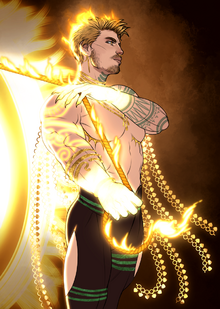
|
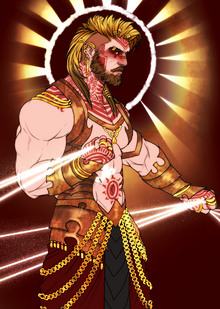
|

|
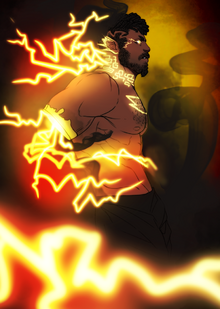
|
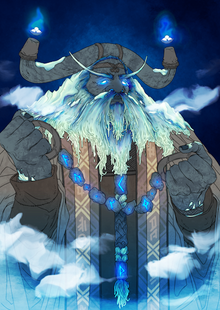
|
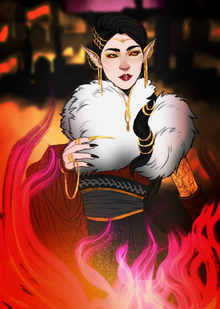
|
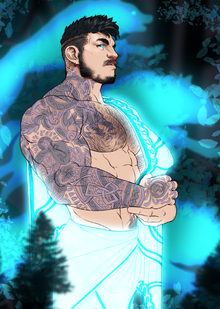
|

|
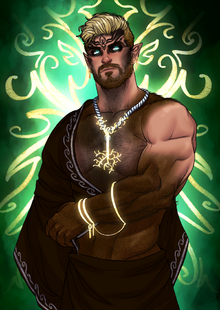
|
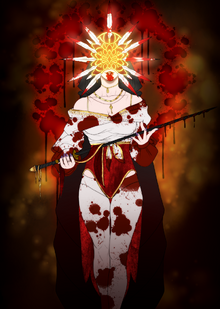
|
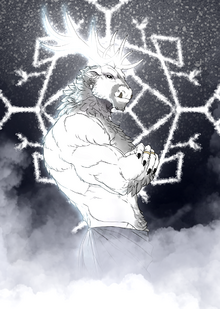
|
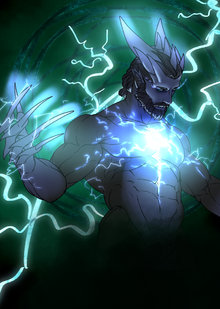
|
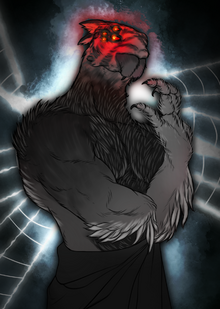
|
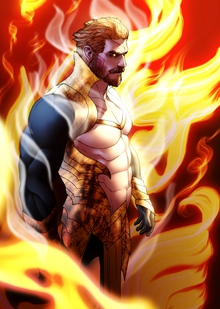
|
Priestly Activities
Fornoss does not have a formal priesthood associated with it, because it is a very disorganized religion. What this means, is that each valley, each fjord, each town, and each city, may have slightly altered folklore. Each priest may tell the legends and folktales of the Gods slightly differently, and some places far removed from society may even use different names altogether. The lore presented on the God listing should generally remain consistent, but players are encouraged to embellish details and fill the gaps with their own unique spin, and generally speaking even if it contradicts the views of other Characters, that is just regional variance. While there is no strict hierarchy under a Fornoss version of the Pope, Fornoss does have official religious figures with occupations within wider Fornoss believer societies.
General Priesthood
There is no formal priesthood in Fornoss worship, any person can at any point in time proclaim themselves a priest, and some people do so even just for their own sake. Unlike Unionism, Fornoss priests are not concerned with expanding the flock of believers, they just want to live right by the Gods and help other faithful on that journey also. It is very common for priests to also double as other religious occupations like Helvigja or as Knights or even Nobles. Priesthood in Fornoss does not impede on anything, because there are no requirements. However, it is common practice for anyone who does want to become a priest, to at least seek out a mentor to learn the basics of what Priests usually do, or say, in certain situations. it's entirely possible to be a self-taught bog-priest, but in more urbanized settings, mentorship is common. Mentors hold a great importance in the lives of priests, who tend to pick carefully.
Helbolwen & Hel
A Helbolwen is not a person but a place, but it bears explaining because the term comes up frequently. A Helbolwen, roughly translated to Hellish Burrow, can best be understood to be a crypt where the Fornoss dead are interred in coffins in the walls, or sometimes when coffins cannot be made simply in holes in the wall as is, the frost keeping them from decaying and slowly mummifying instead. Helbolwen are always built underground or in hills, so that it can expanded by digging further down. Helbolwen always have an entryway which acts both as shrine to Bev, and the actual embalming chamber. The word "Hel", will also come up frequently. While traditionally it has been a derogatory term for Volaheim & Imellomgård, it slowly became a term used to generally describe a place one does not want to be in the afterlife or the afterlife as a whole. Hel is usually used in a negative connotation, and has even permeated in common language due to Velheim-Common interactions in language. Nowadays, the term just refers to everything to do with death.
Helvigja
Helvigja, roughly translating to death-consecrator, is one of the peripheral priestly occupations that specifically is a member of Bev's Mortuary Commune. Helvigja primarily perform the mortuary rites, in embalming, interring or otherwise burying the dead. The embalming process is always accompanied with the Song of the Dead, which is sung throughout the process and the interring process by at least one Helvigja or their protectors. Helvigja work does not end with interring however, in general they keep Helbolwen clean of vermin, other unwanted inhabitants, and in rare cases, are tasked to end the un-life of an Undead who has come back from either improper embalming, or by escaping Imellomgård. Helvigja also linger around Helbolwen to provide mourning help to those bereaved with death of a loved one, either by using Fornoss rituals to summon the visage of the dead, or by singing to the grave together.
Helharjar
Helharjar, roughly translated to Death Warrior, often come paired with the Helvigja and linger around Helbolwen particularly when they are at risk of being attacked or destroyed. Fornoss is the only Religion permitted to bury their dead whole, and their Helbolwen are often filled with gifts for the dead, meaning they are ripe for plundering by grave looters. Helharjar protect not only the Helbolwen itself from looting or desecration, but also the Helvigja themselves, so the embalmers are not the first and last line of defense of such a holy place. Helharjar also assist the Helvigja with carrying coffins if need be, and frequently stand guard if a Helbolwen is in an active warzone to prevent collateral damage. Helharjar are very often partners of Helvigja, or end up becoming partners of them, due to their proximity of work and coordination.
Andlistari
Andlistari, roughly translated to Spirit Artist, are far more nomadic than the other priestly occupations, and travel the wider world with pencil and paper. Andlistari are scribes by nature who record history and events, but most importantly of all, do they record the names and achievements of the dead. In Fornoss faith, it is believed that a person can die twice, once in the physical sense, and a second time when their name is last spoken out loud by someone. As people die, memories of the dead pass on, and eventually there will be no one left to recite the names of the dead, this is where the Andlistari comes in, recording all names, and reciting the names of the dead to the moon before sleep. The Andlistari also serves a secondary function, in that they can make assessments of Soldi or Svaldi of the dead, and help indicate the bereaved if they should quest to restore honor.
Sagnaflétta
Sagnaflétta, rougly translated to Weaver of Stories, are much like Andlistari travelers though it should be said there will be more than enough work for one in Regalia never to travel. Sagnaflétta are scribes just like Andlistari, but focus more on the realm of the Gods than Mortals. Sagnaflétta travel to record oral legends and folklore from the disparate Fornoss faithful across the world, and compile them in a grand book of legends and short rhyming stories. Then, they travel to where the Fornoss faithful live in large numbers, and host gatherings where they read from the book to discuss the lives of the Gods, the inner conflict and interactions they have with one another, and some of the legendary feats the Gods perform. It is highly encouraged to make up legendary actions and interactions of the Gods by players, where that fits within their themes and design.
Peripheral Concepts
Peripheral Concepts are important thoughts from Fornoss theology, that didn't necessarily fit anywhere else on this page, but also aren't strictly necessary to know. They cover a wider range of topics which Fornoss believers have a solidified opinion of, or things that Fornoss faithful might get questioned on in Roleplay and may be useful to have answers for.
The Arken Matter
One as of yet undiscussed matter, is the status of Arken among the Gods. The wider world has a scientific understanding of the Arken as some kind of advanced Spirit from a different Dimension, but to the Fornoss, they are Gods, even to those who do not worship them directly because they are Eilirik. The Fornoss faithful are not so stubborn so as to reject the scientific notion that some of their Gods were Arken long before they were their Gods, but are very resolute in rejecting any rhetoric that would then claim off that fact that they are false Gods. The Vola who are also Arken are very real and divine to those who worship the Vola, they interact and bless the faithful, and empower God Magic beyond the scope of what Void Arken normally could. To the Fornoss faithful, the Vola Arken are real Gods in every sense of the word, and some of them are even more God-like than many of the other weaker Gods of other Religions, specifically because they are so hyper-active and are able to affect the world in more far-reaching and meaningful ways than other Gods ever have.
Vaarda Gates & Keys
Vaarda Gates are an ongoing concern or delight depending on one's interpretation, to the Fornoss Faithful. What exactly happens when one opens is unclear, and it is even unclear if Rand will allow the portals to open from the other side in Volaheim. There exist Gates on all the major continents where Velheim settlers came to be, from Regalia to Oldtera, to all the landmasses of Southwynd, Northbelt, and even Ellador. All these lands were once connected, but now shut off, with their Keys dispersed into the winds. The Keys are Artifacts of Fornoss power, usually weapons, each Key made for a specific Vaarda Gate. There is currently one known Artifact (belonging to the Nordskag Gate) in circulation in Regalia, called Ándlar, though more could arrive in the future as collector items or loot. It is generally accepted, even among the Volirik, that opening the Vaarda Gates without the necessary protections, preparations, or considerations, is generally an awful idea. Even the Volirik have to acknowledge, that nobody knows what is behind those Gates, and that entering the afterlife as a living person, is generally a bad thing unless given protection by the Vola or Eili Gods.
The Magic Burden
Magic is a very sensitive subject in Fornoss faith, because they have a long history with all the benefits and damages of it. Fornoss followers generally do not buy into the scholarly theories of the dimensions (Void/Exist/Ordial/Primal). While they don't refute those alignments as being real, to them, Exist and Ordial do not matter because they do not interact with their Gods in any way. In fact, more often than not, are Exist and Ordial aligned things enemies of the Gods, because they transgress or desecrate their domains. It is not so that every Exist and Ordial thing must always be attacked on sight however, Fornoss followers are more than capable of adopting apathy. Magic among Fornoss followers is understood between Seidr (non-Magical/Dragon Magic Divination), Galdr (God-Magic), Rúnar (God Magic Runic Power) and Nid (Void Magic). There is a technical fifth category called Trolldom, which is a term usually only used by fringe Fornoss followers like Hjordi or Ellador Velheim, which is the same as Nid (Void Magic), but is always evil and used to harm while Nid is not necessarily evil. Seidr, Galdr, and Rúnar are pretty simple to understand and generally unproblematic, Nid however causes some controversy. Fornoss followers acknowledge Void Magic (Nid) as potentially being a gift of Thirun, but that it can both be a blessing and a curse. They acknowledge the effects of Nid on the world as harmful, but that this power can also lend to great strength and achievements. Purism (hating all forms of Magic) does exist in the Fornoss faith, but aims at the idea that Nid is always too risky, and should be controlled/restrained/prevented from being used by caretakers of those cursed with Magic. There are parallels in Unionism, in that the Fornoss Faith identifies Void Magic as a heavy burden, of great power if used to gain Soldi/Svaldi, and of a great terror to the people if used to be careless and flippant and weak-minded. As with any perception of the Pantheons, this is entirely up to the personal beliefs of the faithful, some will condemn Nid as unambiguously evil, some will be frightful of it, while some will welcome it. Exist Magic does exist among Fornoss faithful, but when this occurs, the faithful just believe it was some sort of taint or touching from outside the faith. If someone has Ordial powers, they should generally be put out of their misery however. There are very few situations in which Ordial power is acceptable.
Trivia
- Rand depictions are actually not based on what people know he looks like, but what people think he looks like. Rand is claimed to have never left Volaheim, and there are no memories of direct interaction with him. The only thing that is known to be fully accurate however, are his size, his hairiness, and the transition scars on his chest.
- Thirun and Stalhjart are twin-brothers, identical twins in fact, but both of them style themselves very differently. They are sometimes mistaken for each other, but wide knowledge of their different appearance themes are spreading to correct this.
- Blodrúna is the only God of either pantheon who was once a standalone Goddess of her own religion. Unfortunately, she killed her entire following, and only realized her error afterwards. She vows to do better as Goddess of the Fornoss faithful, hopefully.
| ||||||||||
| Accreditation | |||||||||
|---|---|---|---|---|---|---|---|---|---|
|
| ||||||||
